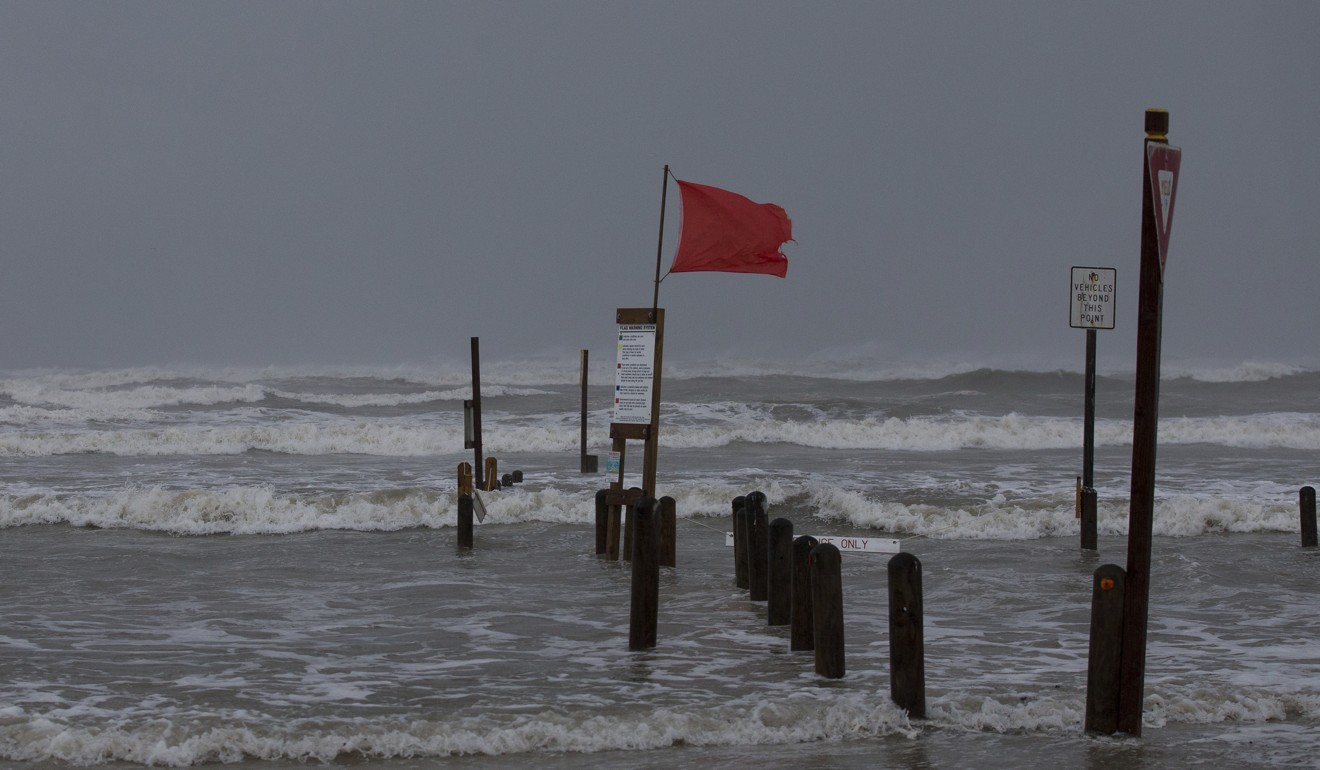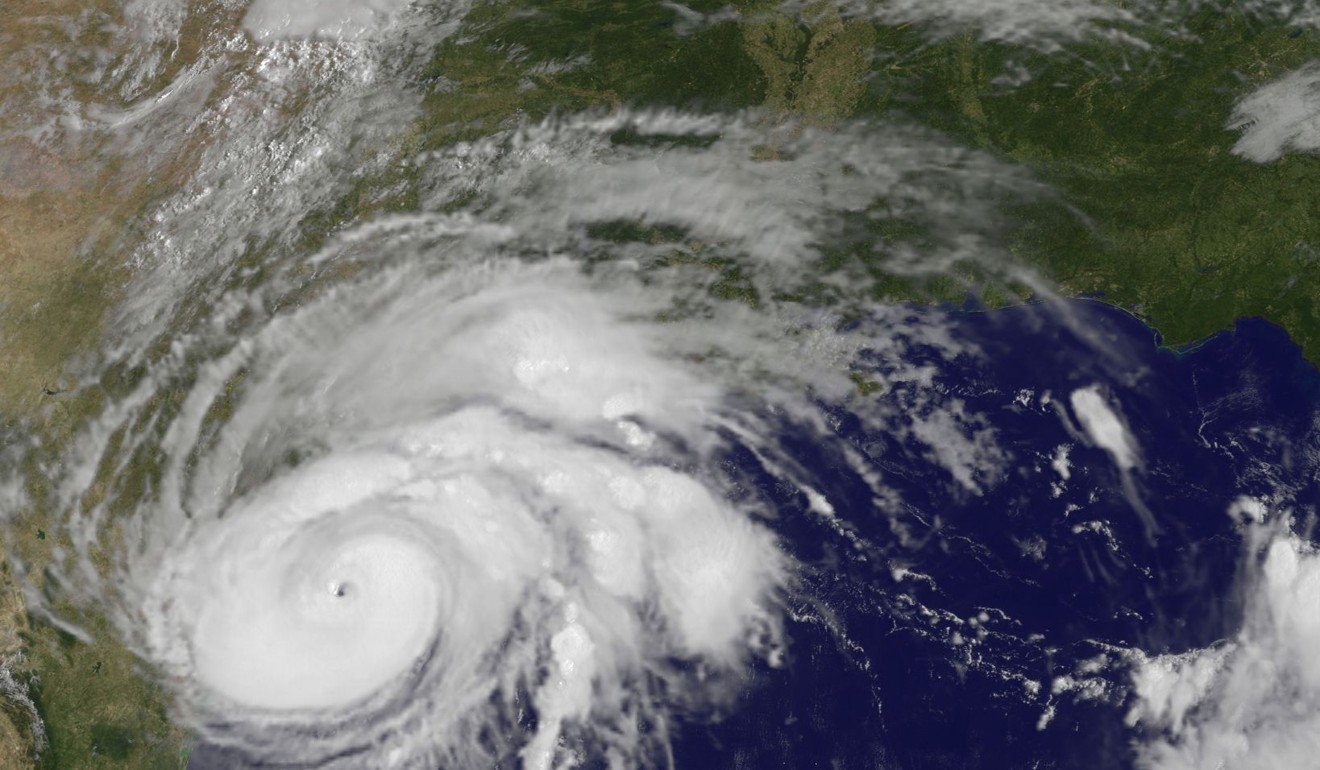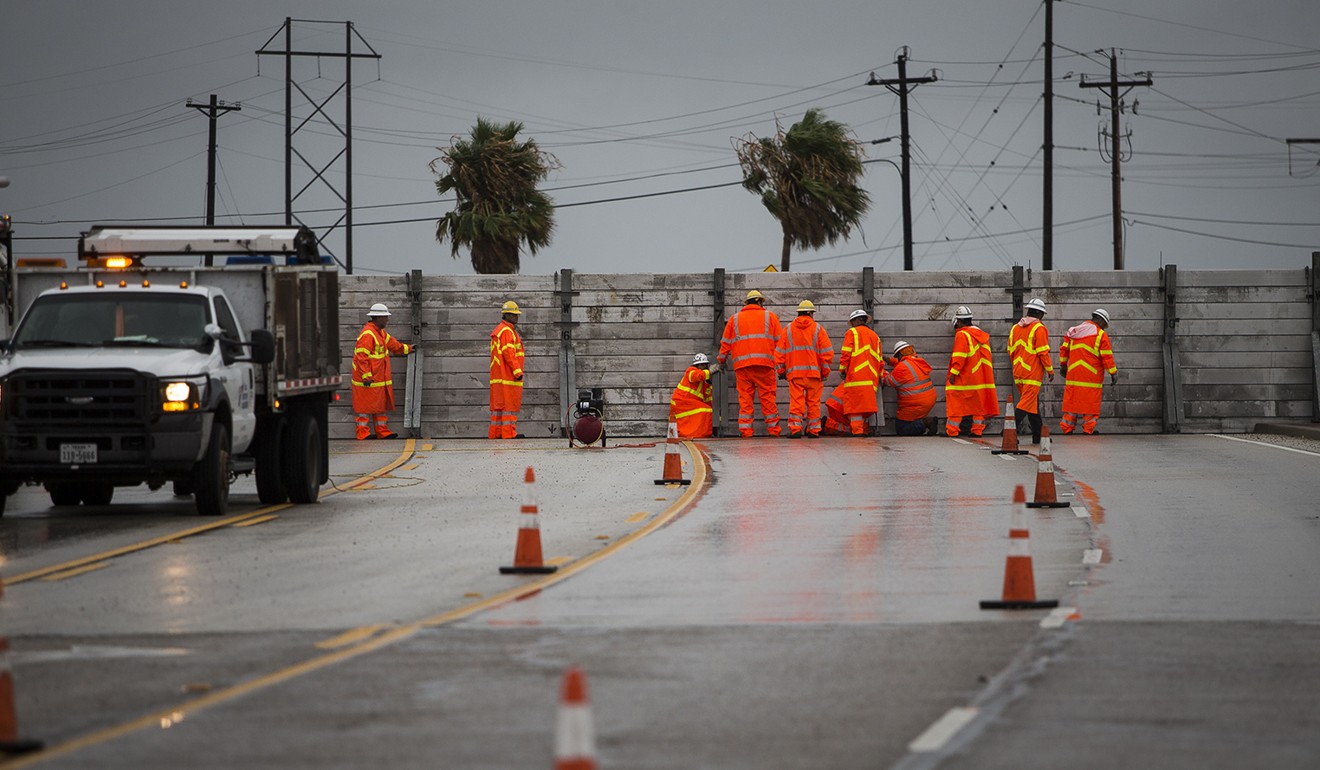
Thousands of Americans flee for their lives as Hurricane Harvey charges Texas coast
Catastrophic rains could inundate southern Texas coast
Residents along a vast swathe of the Texas coast battened down the hatches and stocked up on emergency supplies as Hurricane Harvey crept closer to shore on Friday, threatening lashing rains and 110mph winds in what could be the first major hurricane to hit the United States in 12 years.
“This is a life-threatening situation,” the National Hurricane Centre in Miami warned residents in low-lying areas. “Catastrophic flooding expected across portions of southern and southeastern Texas.”
Harvey is projected to make landfall near Corpus Christi late on Friday or early Saturday. A hurricane warning is in effect along a wide stretch of the coastline from Port Mansfield to Sargent, spanning a region home to about 4 million people. An additional 12 million, many in the major cities of Houston and San Antonio, are under a tropical storm warning.

By Thursday afternoon, all northbound lanes of Interstate 37 out of Corpus Christi were backed up with cars as residents made their way out of the path of a hurricane that forecasters said will bring devastating flooding along the middle Texas coast over the weekend.
The National Weather Service office in Corpus Christi cautioned that the extreme rainfall could be “devastating to catastrophic,” and that the current threat to life and property was “extreme.”

Rivers and tributaries could overflow their banks, and streets and car parks become “rivers of raging water with underpasses submerged,” the weather service said.
At the Hertz car rental outside Houston’s George Bush Intercontinental Airport, arriving customers snapped up trucks and SUVs in preparation for the days of catastrophic rains projected to come.
After learning she was speaking to a journalist, one of the rental workers paused and asked, in a grim voice, “Do you think they’re telling the truth about how bad it’ll get?” Several other employees also stopped and craned their necks to listen.

Local officials and news outlets have had to bat down a viral social media message that circulated widely among Texans on Thursday warning that the storm would be far worse than officials were already predicting.
“Ignore unfounded, unsourced weather predictions that have needlessly frightened Houstonians,” Houston Mayor Sylvester Turner tweeted. “Get info from trusted outlets.”
Harvey intensified in the central Gulf of Mexico, reaching official hurricane status.
Forecasters expect Harvey to strengthen into a Category 3 hurricane, with winds greater than 110mph, before it reaches the coast. After it makes landfall, Harvey is likely to slow down and meander near the coastline, dropping up to 35 inches of rain across some parts of Texas through Wednesday.

Harvey could be the first hurricane classified as at least Category 3 to hit the US since Hurricane Wilma struck Florida in 2005. Last year, thousands of residents along the Florida, Georgia and South Carolina coasts evacuated as Hurricane Matthew was forecast to hit the East Coast as a Category 4 hurricane. However, the hurricane veered east and weakened to a Category 2 as it skirted along the coast.
Historically, slow-moving tropical storms and hurricanes have caused some of Texas’ most severe flooding. In 2001, Tropical Storm Allison hovered above the Houston area for days, bringing up to 30 inches of rain and some of the worst floods in the city’s history.

A major hurricane poses the first major test of emergency response for the Trump administration and the Federal Emergency Management Agency’s new administrator, Brock Long, who was confirmed in June.
Earlier this year, the new administration proposed slashing the agency’s state and local grant funding by US$660 million, a move that many emergency management professionals said would hamper states’ abilities to prevent and respond to disasters.

